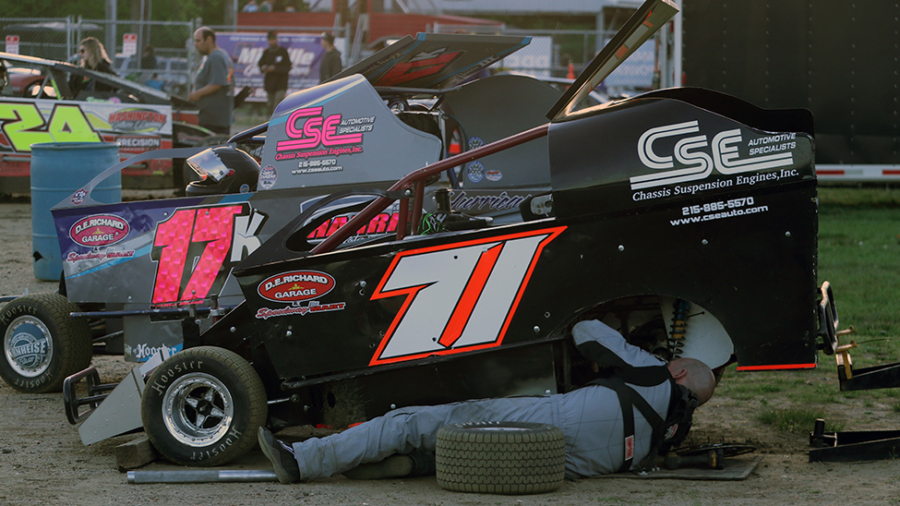Hey Ace – Did you check the spacer on the left rear yet? No, I’ll get it. The driver exits the trailer, sets their right knee in the grass, and rolls under the car. Something like this happens in every pit, on every weekend, as tuning the race car is in the natural order of things.
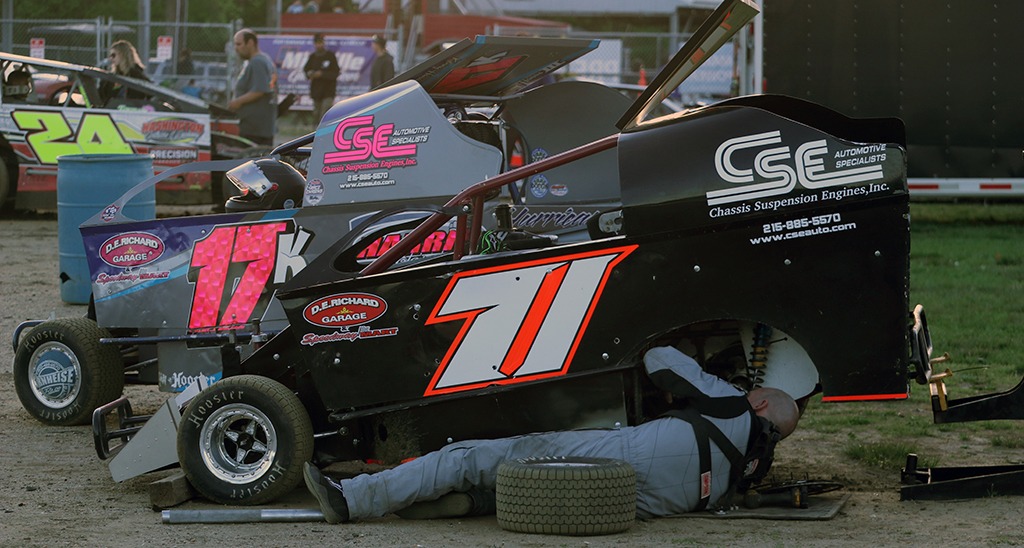
Making Plans
As the new year approaches, it is only normal to go through your mental checklist of things that need attention and replay past race weekends in your mind. You conjure up some of the small things that you tried to make a mental note about for improving – updates in the trailer, tools to replace, a new air gauge because the one you had is a low buck unit that never works.
Taking it in
Coming back to the opening where the driver is making a change to the car, there are some suggestions to consider for the new year. Picture a walk around the track on race day, bouncing in and out of your buddy’s pits. You notice…. Subtly you notice…
Their trailer has a cool tool chest, they mounted the broom on the wall, and they have a neat tray for the chains.
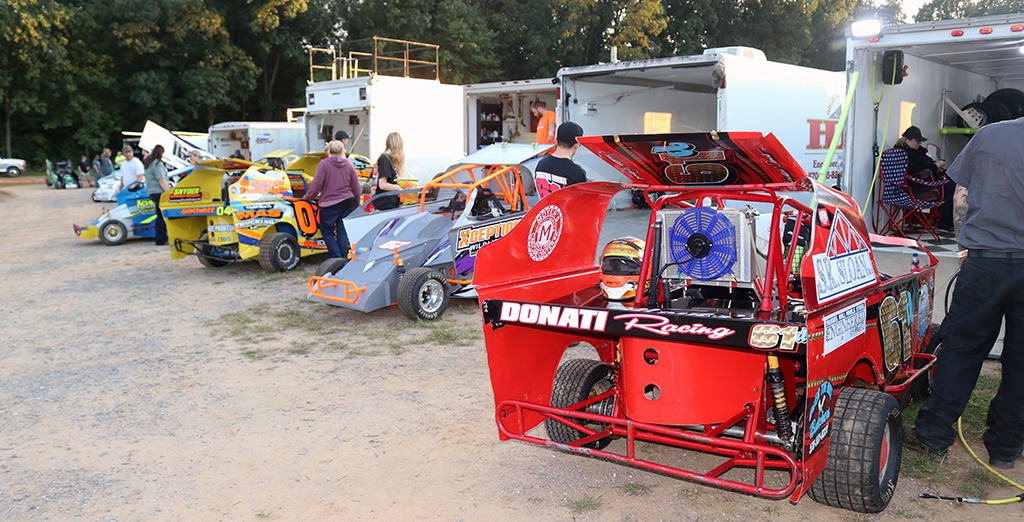
You also notice that sometimes the team’s workspaces look like a tornado blew through… As you scan the area….these guys have stuff laying all over the place.
When watching a team fixing a car, you subtly take it in. You notice the manner in which they conduct their operations. Sometimes it is with envy and other times you simply just shake your head.
So where do you stand if you were getting graded on that report card? Are you neat, tidy, and organized or is your space an ad-hoc sloppy mess?
A New Season, A New Opportunity To Improve
The truth is there is room for improvement in every team pit and a little time is worthwhile to consider improvement for the upcoming season.
Reminisce back to last season and consider the space in which you operate. This includes everything that encompasses where you call home on race night.
The space where the truck is parked, the space around the trailer, the space you claim as your domain behind the trailer – where the car is sitting, and anything else where you have staked your ground.
The things you do in that space likely fall into several categories:
The first thing you do in this space is chill. In fact, most of the weekend is spent idle, hanging out in the pit doing non-race activity things – talking, eating, looking at your phone, and so on.
Then you have the support network of capabilities to consider. The trailer and all of its amenities, your generator, your electric cords, lighting, air compressor, fueling solution, and so on.
Each week you do routine care for the car in the space behind or alongside the trailer. Checking the tire pressures, refilling it with fuel, and making adjustments.
Then unfortunately you have those moments where you are fixing things. Sometimes it is simple work- replacing a bent radius rod before the consi in that same space.
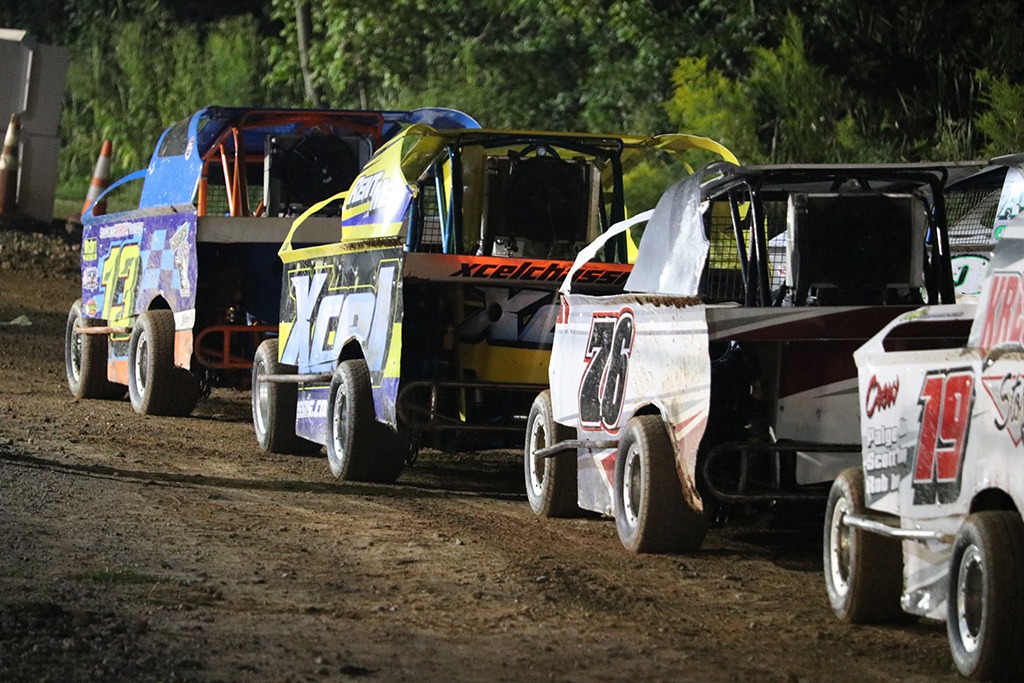
Other times you are required to thrash in that space…. swapping out the front axle assembly, figuring out why the wiring cut out which caused the crash in the first place, and three other unavoidable tasks including tire pressures, refueling, and getting the driver in the car during a 30-minute window (who hasn’t been there!).
The Report Card
Whatever the case, in this time while you are dreaming of the season to come, you can think back to where you fall on the scale of how your team pit looks operating in the spaces available to you –
Perhaps it is somewhat organized but there is room for improvement, or perhaps it is an all-out train wreck every week and the team needs to do some soul-searching to get something sorted out.
Just Hanging Out
Taking it by scenario, let’s start with the hang-out dynamic.
The way you handle this can change from weekend to weekend. If you are in for a long day and you are bringing a crockpot of chili with fixings, then perhaps you want to consider how to set up the space when you pull the back gate down on the trailer.
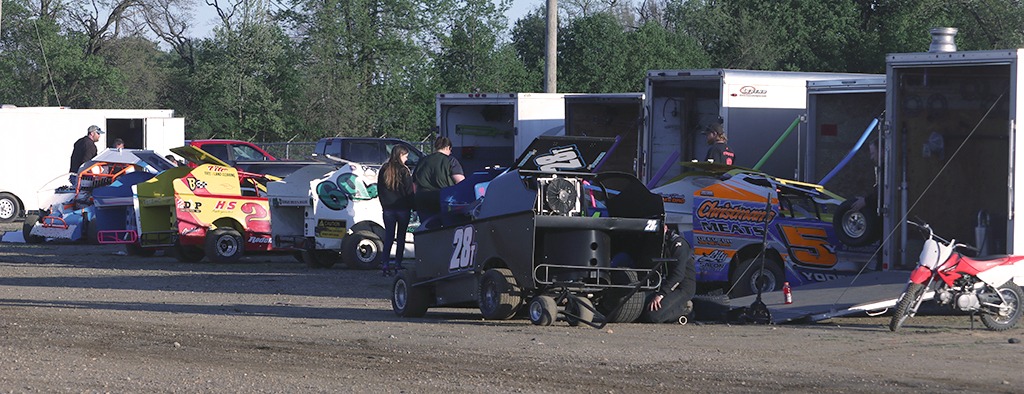
If it is a Jersey Mike’s weekend and you can munch down on subs in the wrapper, then you can skip the crockpot and fixings table and veg out in the folding chairs. Whatever the weekend has in store, consider your preparation, and communicate the plan.
Ideally throughout the night, you follow the initial setup with a periodic walk-through to put stuff away, organize things laying around, sweep the dirt out of the trailer, and so on.
There is something cathartic about a clean trailer and things being neat and tidy in the space you are occupying. What kind of sucks is when things are laying all over the place and you are tripping over crap and cussing under your breath about the dystopia that occurs by the end of the race night.
Yes, this seems so obvious but it is amazing what some team’s pits look like mid-way through the night.
There is another intangible asset to planning your space, and that is when you have to concentrate on what you are there for – racing.
Think back to how many times you had to zig-zag back through the folding chairs to get something out of the toolbox during one of the thrash events. We have all done it and if you know that, then perhaps in the future you can plan to correct where chairs are placed so this doesn’t happen.
At a minimum, make it a practice to push chairs to the side when not occupied and reap the benefit of always having a lane maintained through the center of the trailer.
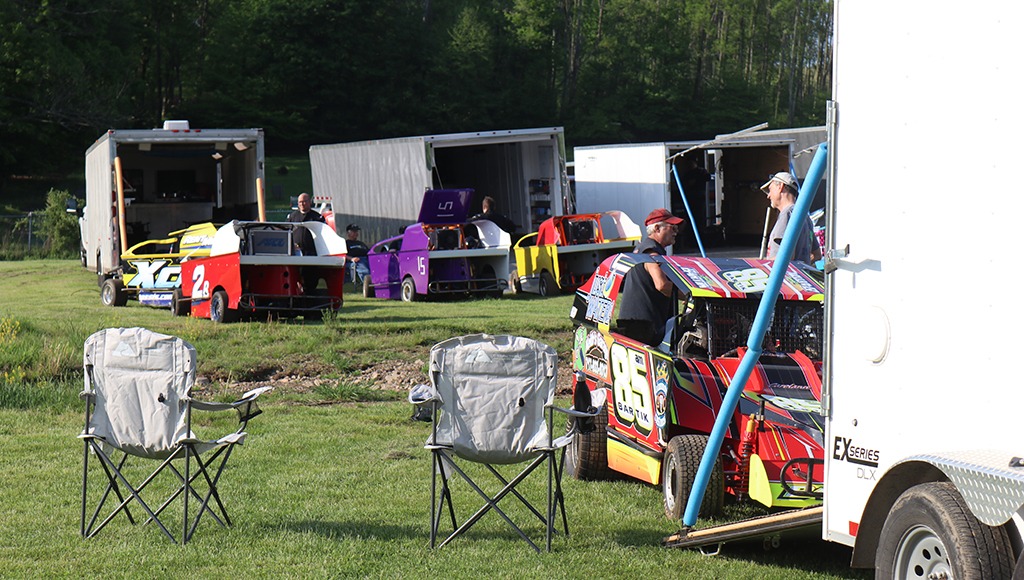
C.A.Y.G.
Learn the premise of something called ‘KaHHhh-Gee’. The acronym is C.A.G.Y. and the premise is to CLEAN AS YOU GO. This simply means building in the practice of straightening things up as the night goes on.
A tidy trailer, done all through the day, sure makes for good times at the end of the night when you are worn out from a long day and want to pack your stuff and head out of dodge. It also makes for less work on the day after when prepping for next weekend.
They say it is best to have a place for everything and then everything has its place. Consider the times when you are doing a once-around on the car. Whether it is the routine thing or one of the moments where you have to fix the car under duress, where are your tools?
Most times, they are on the ground, they are on the roof, they are laying on the hood, they are sitting strewn on the back ramp of the trailer. They’re in someone’s pocket – they are lost somewhere in the abyss of your toolbox in the back of the trailer.
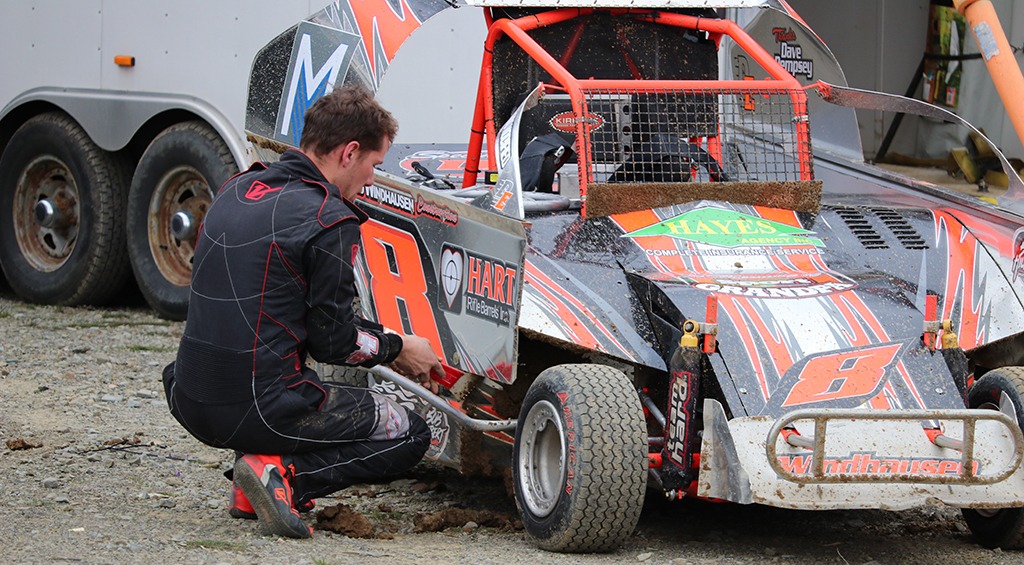
Housekeeping
What if tools were tidied up during the downtime each week? Spend 30 minutes every weekend putting things back – labeling drawers, discovering some things missing, and making a list to add them for the next race weekend.
What of a tool caddy? A simple tray that comes out with you every time while working on the car and is placed on the back deck behind the roll cage where everyone knows where it is. Perhaps there is a stubby screwdriver kept in the tray at all times for the Dzus buttons.
A New Game Plan
Bring the tray out every time you work the car and let it serve to place tools in and capture spare parts. Why waste your time rolling around in the dirt looking for a cotter pin, or dropped socket?
If everyone gets in the habit of putting things in this centralized spot, then there is no question where pit guy Joe put the locker for the front spring while he runs off to check where you are in the consi lineup.
Begin with the catch-all tray and then introduce some other practices. Start with small habits and build on them. After the catch-all tray for the back of the car, how about a catch-all tray for the worker mat to lay on the ground?
Worker mats are such a simple utility, yet you hardly see them used. Why lay in the dirt? An old entrance rug, or some other item, does not take up too much space and is so easy to employ so why set your tools down on the bare ground? Keep another catch-all tray near your worker mat, then you have things organized while you are horizontal on the ground.
Wouldn’t you like to have the time back you spent last season searching for something on the ground – admit it you were there at some point?
Taking Care of a Key Asset – The Driver
Incidentally, it is time to call up the opening scene. Time and time again we see drivers laying in the dirt in their fire suit. This is a terrible practice.
Fire suits are precious, and grinding them in the dirt, spilling fuel on them while refueling, wiping grease and oil into them is not only dumb, it hampers their fireproof abilities.
Drivers run warmups, then sit around. They run the heat and sometimes they sit around for hours waiting for the feature. All during that time, they are traipsing around in what is likely the most expensive garment they own, ruining its functional purpose.

Yes, it is a hassle to take off your shoes, to change in and out of a suit, but the truth is, it is really the responsible thing to do. You know what – no one does it. No one.
Bring a jumpsuit or something to change in. I have seen drivers change out of their suits in 45 seconds when it is time to go home at the end of the night.
Also, not for nothing, some nights it is 90°F and for the life of me, I do not know why one would want to walk around in a triple-layer suit.
All of this is to point out that if you think through the operation, there are likely a few places that could be improved.
Learn from the Pros
Top-notch teams have figured out so many of these things. If you have ever watched some of the top DIRT modified teams, say Stewart Friesen’s group, they look like a NASCAR crew with the operation.
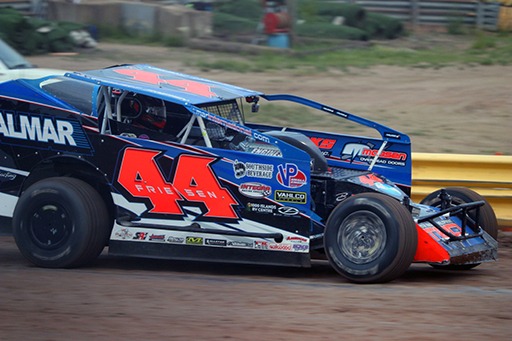
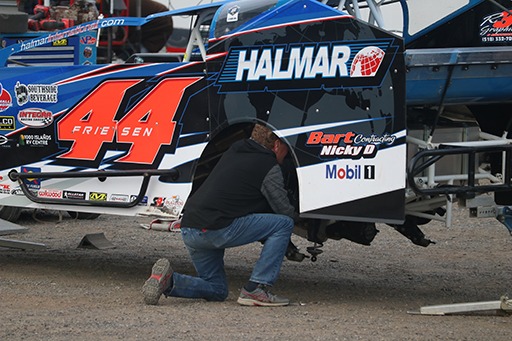
They looked at stuff like this and made it an expectation to follow some ground rules for being a part of the road crew.
This is a great time of the season to consider your craft. To think about ways to improve not only your race craft, but the operation at the race track. Discuss it with your crew.
Each week reinforce the plan and build good habits. Why not start with a habit to review the game plan each week while on the commute to the track? You can get things straight with whoever is in the hauler for that race weekend and work on one aspect of having a smooth go of it at the racetrack.
Plan the Work – Work the Plan!
It is something akin to planning the work, and working the plan. And who doesn’t love it when a plan comes together?
all photos by Kevin Inglin


